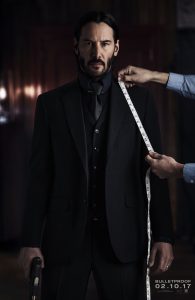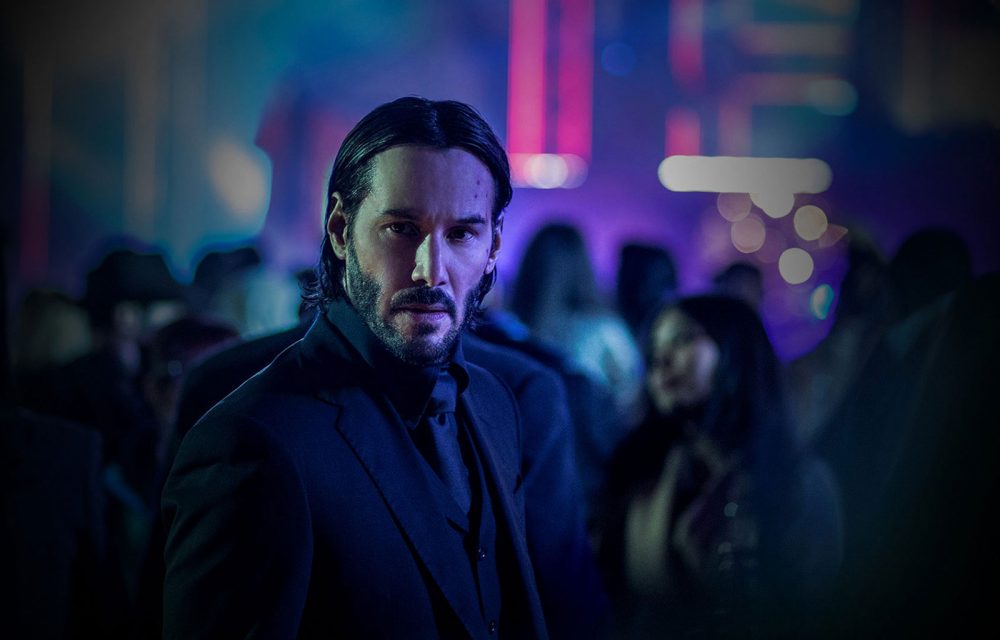After the unanticipated success of John Wick, it was inevitable that there would be a follow-up. That film is John Wick: Chapter 2, a visually striking but relentlessly mindless exercise that revels in instances of mountainous violence and homicide. For those willing to completely forgo mental stimulation, the film offers an entertaining two hours at the cinema.
John Wick (Keanu Reeves) re-announces himself in blistering fashion, when he storms into a mafia stronghold to retrieve his much-loved car. The extended sequence is a well-timed reminder of what the original did so well: showcase pulpy, stylised action. Wick gets thrown around, punched, and even hit by cars. And his ruthlessness is joyous to watch.
The hitman, clearly jaded and disillusioned, immediately retires to a life of anonymity with his beloved pet dog. It isn’t long (about three minutes) before he is called back into action, when an old acquaintance, Santino D’Antonio (Riccardo Scamarcio), requests his services. Wick has no choice but to obey D’Antonio, as he is bound by the code by which hitmen live. What ensues is plenty of dizzying scenes of fighting, shooting, foot-chases and death.
The film is so action-centric, and so devoid of any other narrative or character merit that it feels like an intensification of the genre. The dialogue and exposition is at best awkward, at worst, laughably bad. After stabbing a fellow hitman in the chest, but not killing him, Wick sternly says “consider it a professional courtesy.” In another painfully long sequence of Wick ‘suiting-up’ and procuring weaponry, he wryly asks of a weapons salesman “what’s for supper?” Similarly, Wick and his supporting characters are devoid of any complexity, and attempts at character development are woefully unsuccessful.
Indeed, the screenplay is conspicuously weak – its defects readily obvious to any viewer. The dialogue and narrative only function to trigger long and expansive fight sequences, which feel like video game cut-scenes. There are, however, sure to be no complaints from the audience, who, like director and former stuntman Chad Stahelski, understand that its main appeal resides in Wick’s murderous, clinical amorality.
But what the film lacks in subtlety and complexity it makes up in glorious brain bursting, soul-destroying violence. Taking its inspiration from such contemporary films as Taken a nd Collateral, the John Wick series provides us with the best fight scenes in years. The violence is raw and unobstructed: we see Wick’s many, and frankly concerning, use of ‘headshots’, his grappling and crushing of enemies, and a few explosions thrown in for good measure. It certainly gets the adrenaline heartily pumping.
nd Collateral, the John Wick series provides us with the best fight scenes in years. The violence is raw and unobstructed: we see Wick’s many, and frankly concerning, use of ‘headshots’, his grappling and crushing of enemies, and a few explosions thrown in for good measure. It certainly gets the adrenaline heartily pumping.
Wick’s balletic movement across the screen, accompanied by the rhythmic frequency of flying bullets, gives the film’s violence a certain elegance. In fact, Dan Laustsen’s camerawork and lighting only enhances this. The camera weaves around Wick’s figure, often draped in neon lighting, intensifying and glorifying the carnage to which we are witness. This doesn’t compromise the hard-hitting nature of the action, but it does impress a sense of theatricalisation.
Unlike many B-films that bear resemblance to John Wick: Chapter 2, the production values are polished and sharp. The camera often squarely focuses on Wick through long takes. Great attention seems to have been paid to the film’s background detail. The various locations – New York, New Jersey, Rome – are enshrouded in darkness, shadow and mystery so as to produce a brooding, portending atmosphere. The visual style established in John Wick, and maintained in this film, is one of its main distinguishing factors amongst other nameless action films.
What John Wick: Chapter 2 won’t do is engage your mental faculties. What it will do, in troves, is immerse you in its underground world that is full of violence, rampage and death. Which is a thoroughly worthwhile experience.

John Wick is showing from May 15 and distributed by Rialto Distribution.
